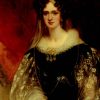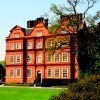The city of Adelaide was named after Queen Adelaide, wife of King William IV, who reigned when the South Australia Act passed the British Parliament in 1834. Mary Hopkirk claimed the naming occurred in 1832; however, South Australia was still very much in embryonic form and existed only as a plan at that point. Not until 1834 did the legislation pass for the formation of a colony in southern Australia, facing little resistance in the Commons but a more difficult passage in the Lords. The Duke of Wellington’s support proved pivotal. He later noted the proposed settlement’s size was ‘rather large for a body of speculatists’. Matthew Davenport Hill MP and others reassured reluctant Tory peers of Wellington’s endorsement.
Edward Gibbon Wakefield was so delighted with Wellington he proposed the new colony’s capital be named after the Duke. The idea lingered until the first emigrant ships departed in 1836. In June 1835, Colonel Robert Torrens backed Captain John Hindmarsh for Governor. Just before leaving England, Hindmarsh was knighted and made the first vice-regal representative of South Australia. He wrote to the King, presuming it was his right to enquire, asking whether the principal town should bear His Majesty’s name or the Queen’s. The King chose the latter, responding via his secretary on 13 July 1836 that the capital should be named Adelaide. Only Wakefield objected.
Timing shaped the naming more than intention. Hindmarsh was doing no more than following accepted protocol in asking the King to deliberate on the name. Unlike the radical members of the South Australian Association, Hindmarsh preferred military figures and had little sympathy for their ideological aims. At the time, both William IV and Queen Adelaide were sovereigns in England and in Saxe-Meiningen, a tiny German duchy in what is now Thuringia. Princess Adelaide grew up in Meiningen, a cultural hub promoted by her father, Duke George, who sheltered intellectuals such as Schiller and Jean Paul Richter.
Succession planning for the English throne shifted drastically in 1817 when Princess Charlotte, daughter of George IV, died in childbirth. William, Duke of Clarence, appeared the likeliest to produce an heir, though his many illegitimate children with the actress Mrs Jordan, the FitzClarences, were excluded from succession. William’s brother, the Duke of Cambridge, proposed marriage to Princess Adelaide. She accepted without meeting William. At 25, she understood the match’s political nature. She was the sixth candidate approached. They married at Kew Palace in July 1818.
Born in 1792, Adelaide was the eldest child of George Frederick Charles, Duke of Saxe-Meiningen. After her father’s death in 1803, her mother became regent. Adelaide and her siblings were educated with a strong moral focus. Known for her studiousness and restraint, she disliked frivolity and was critical of the lax morals spreading through Europe after the French Revolution. Devout and dignified, Adelaide could be stern when necessary. Writers described her as more dignified than attractive. Charles Greville was scathing, calling her ‘this frightful spotted majesty’, while Philip Ziegler admired her tenacity and moral clarity.
The couple’s early married life was spent in Hanover due to financial constraints. Their two daughters both died in infancy. After their return to England, Adelaide managed the royal household with thrift, helping restore financial order. She softened William’s rough habits and treated his illegitimate children with generosity. Despite their indifference, she welcomed them into family life. It was said she began the English tradition of Christmas tree gifts for children. In Meiningen, tree decorating was already a cultural tradition.
William and Adelaide became King and Queen in 1830 during a time of political turmoil. Electoral reform loomed large. They chose a modest coronation, avoiding Westminster Hall’s banquet and re-using jewels. Adelaide’s coronet, made of her own diamonds and pearls, was elegant and understated.
With their elevation came intense public scrutiny. Adelaide’s distaste for reform became apparent. Raised in a conservative German court during the Napoleonic upheavals, she valued stability and viewed revolution with dread. Her Tory sympathies were soon clear. Princess Lieven reported her being friendly in private but cool towards Whig ministers. Her opposition to the 1832 Reform Bill was well known. Her chamberlain, Lord Howe, a Tory himself, stirred tensions by feeding information to the Duke of Wellington. Some suspected an inappropriate relationship between the Queen and Howe, though no evidence supported the rumours. When the Queen became pregnant, gossip took the form of slanderous jokes.
The press accused Adelaide of manipulating the King. At a Westminster meeting, Daniel O’Connell reminded crowds that Charles I was executed for listening to a foreign wife. In 1831, a mob attacked the Queen’s carriage, terrifying her. Anti-German sentiment was rife; the King was mockingly called ‘Mr Guelph’, and Queen Adelaide’s name was removed from theatres and buses.
In time, public opinion softened. Adelaide’s loyalty, dignity and good works earned admiration. Harriet Martineau, a fierce reformer, later paid tribute to her. The Queen grew close to Princess Victoria, who she affectionately called ‘My Dear Little Heart’. Barred from children of William’s mistress, Victoria still felt Adelaide’s care. Upon William’s death in 1837, Adelaide became Queen Dowager. She wrote to Victoria: ‘Accept the assurance of my most affectionate devotion … your Majesty’s most affectionate Friend, Aunt and Subject’.
Granted £100,000 a year and residences at Bushy Park and Marlborough House, she lived comfortably but gave generously to charity. Seeking better health, she travelled to Malta in 1838–39 and was dismayed to find no Anglican church. She donated £20,000 to build St Paul’s Anglican Cathedral, choosing a site with ties to her Hanoverian heritage. The foundation stone was laid in March 1839, and her banner still hangs in the cathedral.
Queen Adelaide died on 2 December 1849 at Bentley Priory and was buried at Windsor. Her legacy lives on in the city that bears her name, where she holds a special place in the hearts and minds of many who live there today.







Comments